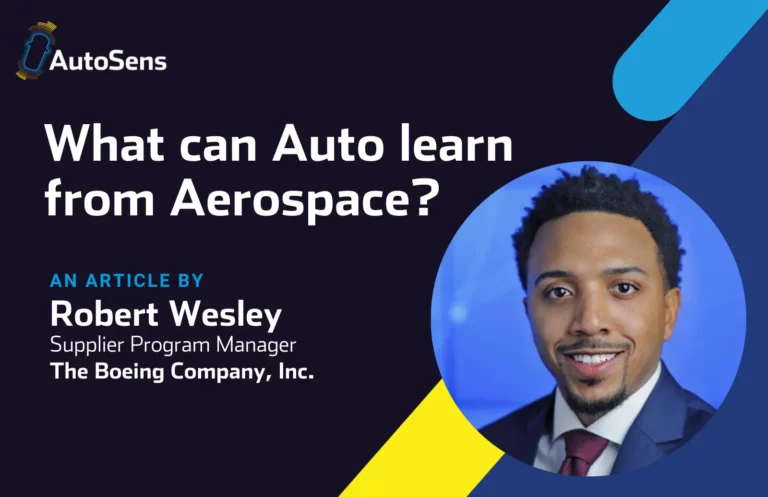
We caught up with Irene Perali, to share her journey to becoming Senior Sensor Systems Engineer at Zoox. Irene also discussed how safety is the foundation of their system design, and what she’s looking forward to at AutoSens in Detroit this November, where she will be speaking on ‘Towards full autonomy: Safety implications for sensor architectures’.
For those that may not be familiar with Zoox, who are Zoox and what are their aims? How does your role fit into this within the company?
Zoox is a start-up founded in 2014 and based in Foster City, California. The mission of the company is to create autonomous mobility from the ground up. Zoox is building an autonomous platform to provide a mobility service in urban environments. We are developing the entire ecosystem, including a purpose-built vehicle, software and hardware.
It’s a complex system involving diverse disciplines and my role as a System Engineer is to guarantee that different components work in synergy, to deliver a safe mobility solution. In particular, I focus on sensors and their interactions with compute elements to perform the sensing function.
How did you get into this role?
My background is in Electrical Engineering, and during my PhD research I designed and built a gamma camera from scratch. Starting from requirements, I architected the system, designed the electronics boards, wrote the firmware for low-level data processing, and developed the user interface. After the camera bring-up, I worked on verification and validation activities.
This experience gave me the opportunity to touch all the aspects of a sensing system from mechanical constraints, to signal integrity and image processing. At that time, I didn’t even realise I was doing systems engineering.
When I started my career in the industry, systems engineering was just a natural fit for my skill set. I genuinely enjoy cross-functional work and I gradually transitioned from cameras to all the other sensing modalities required for autonomous vehicles.
You mention that your passion for sensors began at university, in what field was your initial research? How much is there in common there with automotive applications?
My initial research was in medical imaging, a field I still love and follow with passion. When I moved to automotive, I found many commonalities between medical and automotive applications.
First, sensing systems have similar architectures, regardless of the field of application. The flow to translate a physical property into a digital signal and use it to make a decision is a concept that can be applied to many other fields.
In my medical research, the camera needed to image gamma rays emitted by the body during proton therapy treatments and used the image information to control the proton beam.
In autonomous vehicles, cameras image traffic participants and the information of their position in the scene is used to control the vehicle’s trajectory.
The second aspect that automotive and medical applications have in common is that they are both safety critical. A small failure of the components in the system can lead to severe consequences, including fatalities. Safety needs to be taken into account during the entire life-cycle. The design must be robust to failures and must include safety mechanisms for online fault detection. Testing activities are extensive, the validation of new features can last several years before they can be introduced in a product.
How would you describe Zoox’s approach to safety?
At Zoox, we are building a strong safety culture, which means that safety is not a separate aspect of our work, but is the foundation of every activity that Zoox’s employees perform.
When it comes to safety, I like to take a holistic approach. It’s not just about following certain standards – even if standards are precious resources – it’s about thinking about the safety implications of each choice we make.
Safety starts from defining the right requirements and designing the system to meet those requirements. When systems are built, there is no single test that can prove their safety. The combination of different verification and validation activities is necessary to increase the confidence in the solution that we want to deploy. Moreover, how we are doing things is as important as what we are doing. Defining appropriate processes that allow to catch issues before deployment is also a key point.
What are you most looking forward to about speaking at AutoSens in Detroit?
Conferences are a great opportunity to recalibrate my perspective on the problems I am trying to solve. I am looking forward to listening to the other speakers’ presentations and learning something I didn’t know before, or I missed because I was too focused on the details of my daily tasks. AutoSens provides a broad overview not only on the latest development on automotive sensors, but also on future trends.
In addition to that, I am proud to represent Zoox and share our journey with others in the industry.
Find out who else is speaking at AutoSens in Detroit 2020. View speakers >>







